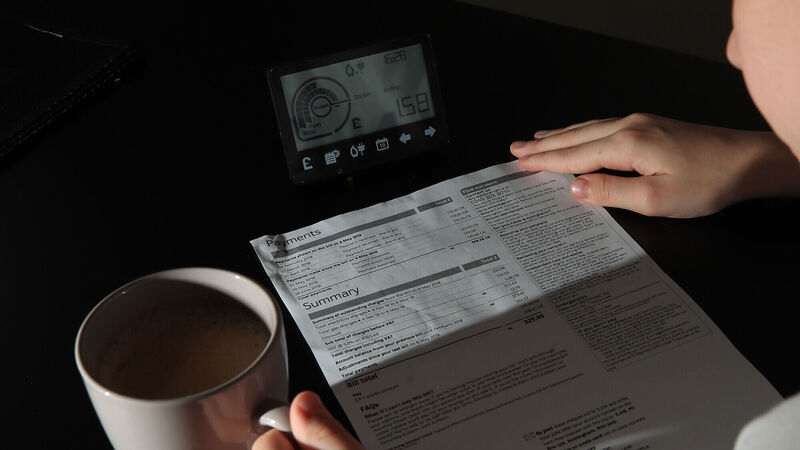Farm Finance: Smart solutions on the farm can lead to significant savings as the price of gas and electricity soars

As a nation, we’ve had two-tiered electricity prices for years with the older of you remembering the catchy ‘night-saver’ jingle encouraging electricity users to go for a split electricity meter at the time.
The prospect of electricity rationing and outages has gained plausibility over the past week or so with speculation that Russia might cut off gas supplies to Europe or in order to ramp up sanctions European countries reach a common consensus to weaning itself off of Russian gas.
As reported in the Irish Examiner, February was a record month for wind energy in Ireland, with more than half the country's energy needs coming from wind power. One plan being explored by the Government is apparently the consideration of mandating peak pricing tariffs for electricity customers.
From a cost perspective, if electricity usage can be spread over the whole 24 hour period of any day, the costs of generating that electricity becomes cheaper as gas-powered electricity generation is switched on at peak times to meet demand, whereas electricity generated surplus to requirements in the witching hours can go wasted. Evening out our electricity usage will mean that more of our wind-generated electricity is used as part of the total generation.
As a nation, we’ve had two-tiered electricity prices for years with the older of you remembering the catchy ‘night-saver’ jingle encouraging electricity users to go for a split electricity meter at the time. However, technology has moved on. According to ESB Networks, more than 750,000 smart meters have been installed meaning effectively infinitely variable pricing options could be introduced rather than the traditional day rate and night rate as we used to know it.
Indeed some Irish electricity providers already have a three-tier system installed. One such plan currently offers a day rate of 25cent per kw for the hours of 8am to 11pm, with a rate of 13c on the off-peak hours and a further discounted rate of just 7c for the hours of 2am to 4am.
Typically farmers can currently avail of a flat standard rate of electricity or alternatively choose tariffs geared to time of usage. The Government's consideration of mandatory time of usage enrolment is likely to be confined to households initially as there is a perceived element of choice as to when electricity is used within the home. It seems unlikely that mandatory enrolment for non-residential customers will happen in the short term but electricity providers may of their own volition begin to push customers harder towards that option with sufficient discounts applied for off-peak usage.
From a farming perspective, heavy users of electricity include dairy farmers and pig and poultry operations and tillage farmers where grain drying is carried on by electrical-powered dryers. Reducing consumption is in many respects not possible without reducing output or incurring expenditure in upgrading equipment to more efficient versions. Adjusting time of usage to fit within off-peak timing is possible for some usage but not overly practical.
Fitting timers to water heaters and installing a timed ice-builder operating at super low rates and used as a part of a two-stage plate cooler can allow for water heating and milk cooling to be performed at the lowest possible rates – together water heating and milk cooling can account for up to 50% of electricity usage on dairy farms. These installations will result in additional capital costs, but VAT can be recovered and these capital investments are tax-deductible.
For a mid-sized dairy farm of 100 cows, using 30,000 units of electricity per year, were the potential saving by diverting usage to super-low off-peak rates say 25% of usage, with the milking machine, water pump, scrapers and ancillary milk cooling happening at more sociable hours, the potential saving in electricity costs could be €1,350 per annum.
Reducing usage should also be considered. In the first instance avoid wastage, leaking taps and air hoses see water pumps and air compressors kicking in unnecessarily.
Investing in Solar Photo Voltaic panels and battery storage or a wind turbine might also be an option. Solar PV can qualify for a 60% grant for all farmers for 2022. For a 6kw Solar PV system with battery storage system the payback period can be lower than five years at current prices. Grant aid can apply on systems up to 11kw, but for single-phase users, the maximum export back to the grid is limited to 6kw. A 6kw system will generate only about 20%-25% of electricity usage for a mid-sized dairy farm. Planning exemptions are available for both wind turbines and solar panels where relevant criteria are satisfied, however, for the purposes of availing of TAMS grants, a certificate of exemption must be obtained prior to making the grant application.
The general criteria by which planning exemptions are available is listed as per the SEAI Conditional Planning Exemptions document, however, those exemptions are in of themselves not applicable in some instances such as development in the case of an area of special area of amenity, and it is recommended that a certificate of exemption is obtained before work commences to ensure development is not subsequently rejected.












